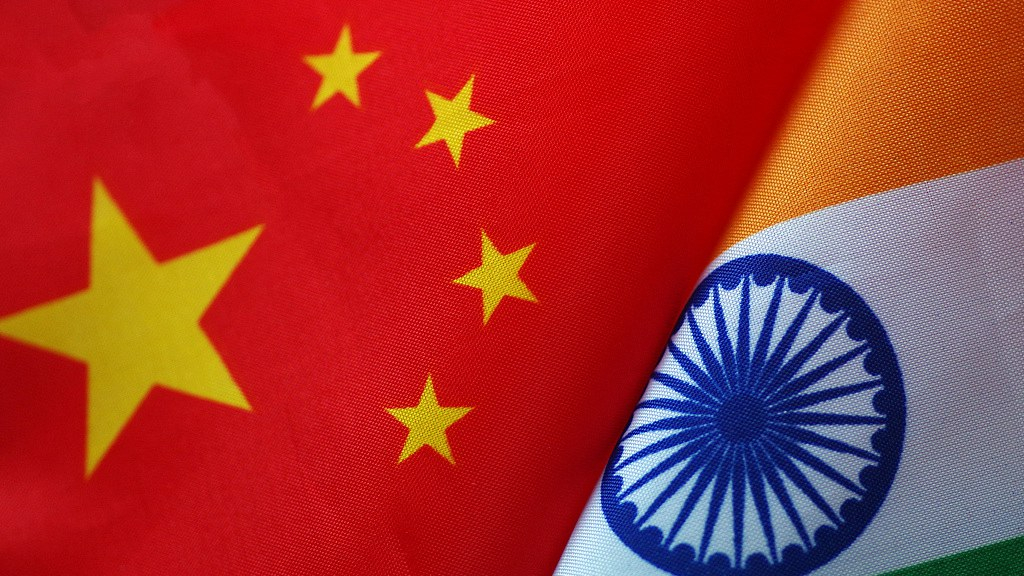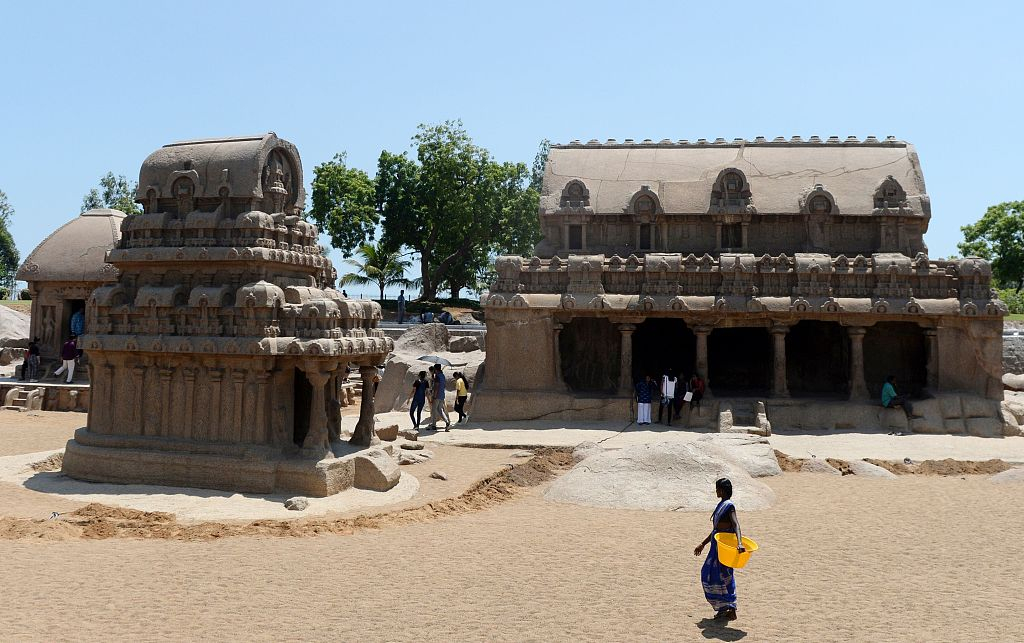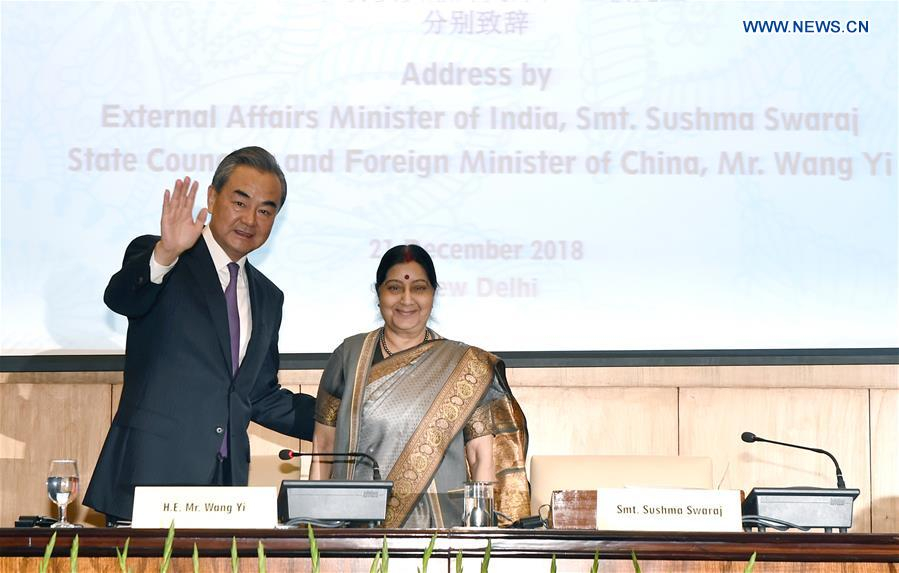
Editor's note: Rabi Sankar Bosu is an Indian freelance contributor to Chinese media outlets. He writes about Chinese politics, social and cultural issues, and China-India relations, with special interest in the Belt and Road Initiative. The article reflects the author's opinions, and not necessarily the views of CGTN.
The 2.7 billion people residing on either side of the Himalayas, as well as the whole world is now waiting with great expectations for this week's much-anticipated political event, the second edition of the informal summit between Prime Minister Narendra Modi and Chinese President Xi Jinping, beginning on October 11 in the picture-pretty historic temple town of Mamallapuram in Tamil Nadu.
However, for many, this appears to be clear why PM Modi chose Mamallapuram as venue for hosting the second round of heart-to-heart talk with Xi instead of choosing his own parliamentary constituency Varanasi as hinted earlier this year by various media outlets.
By choosing the ancient seaside town, Modi has played a trump card which will turn out to be more significant in terms of attracting Chinese investments to southern part of India under his "Make in India" campaign.
A wide range of reasons are being put forward as Modi's chemistry of picking the coastal town as the venue. First, the port town had some historic and trading connections with China from the third century until the end of the ninth century AD, under the reign of Pallava dynasty.
The seventh-century Chinese pilgrim and scholar-monk Xuan Zang, who introduced Buddhist scriptures to China from India during the Tang Dynasty, visited the imperial capital of Pallava kings, Kanchipuram through Mamallapuram in 640 CE.
Furthermore, Mamallapuram bridged as a part of China's "Silk Route" and India's "Spice Route" dating back to 2,000 years.
While focusing on Mamallapuram's historic ties with China that would bring more Chinese tourists and investments to this thriving city and its adjacent areas, the Modi government has perhaps indirectly signaled its softening stand on the various key interconnection projects under the China-proposed Belt and Road Initiative (BRI) which has created new opportunities and businesses around the world, albeit, India has so far refused to join this global project.
There is no denying that cooperation and communication between the two neighbors and the world's fastest growing economies are needed at this time, since protectionism and unilateralism are on the rise. No doubt, the outcomes of Mamallapuram talks could gear up the recent downturn in Indian economy.

Pancha Rathas monument complex at Mamallapuram, India, October 3, 2019. /VCG Photo
Pancha Rathas monument complex at Mamallapuram, India, October 3, 2019. /VCG Photo
As such, it can be hoped that seeds of trade and economic cooperation sown in ancient times will be carried to the Xi-Modi summit 2.0 in this historic city, letting the industrial hub on the Silk Road shine brighter.
Though this time the meet will be shorter than the first informal summit held in the central Chinese city of Wuhan from April 27-28 last year, it is expected that both leaders will impart fresh hopes for blossoming of Sino-Indian relations through their political acumen.
Indeed, Xi's visit to India at the invitation of Modi is taking place at a time when it has become an international penchant to raise walls in neighboring countries, creating distrust among themselves around the world.
Thus, in the light of changing regional and global geopolitics, it's the right time for the two Asian powers to forge a forward-looking partnership on equal terms that would last for generations.
But more importantly, this unstructured "tete-a-tete" will give some instructive cues to both leaders to widen their aspirations in the field of trade, tourism, strategic military communication, and development-related concerns in addition to several regional and international issues to pave the way for win-win outcomes in diverse areas.
However, a section of Indian foreign policy makers, political analysts, think tanks and nationalistic media outlets have raised question about the timing of Xi's India visit in light of the Houston "Howdy, Modi" event.
But the stark reality is that the spectacular Howdy extravaganza has miserably led to a "no trade deal" in New York despite the apparent bonhomie between Modi and U.S. President Donald Trump.
However, despite some discordant notes in bilateral ties, a number of feel-good measures taken by both sides have kindled a note of optimism in Sino-Indian relations.
Just after eight months of the inaugural edition of India-China High Level Mechanism on Cultural and People-to-People Exchanges held on December 21, 2018 in New Delhi, the second meeting held in Beijing, on August 12, suggests that the support for enhanced people-to-people contacts is widening in both countries.

Chinese State Councilor and Foreign Minister Wang Yi (L) and Indian External Affairs Minister Sushma Swaraj co-chair the first meeting of the China-India high-level people-to-people exchanges mechanism, in New Delhi, India, December 21, 2018. /Xinhua Photo
Chinese State Councilor and Foreign Minister Wang Yi (L) and Indian External Affairs Minister Sushma Swaraj co-chair the first meeting of the China-India high-level people-to-people exchanges mechanism, in New Delhi, India, December 21, 2018. /Xinhua Photo
On the other hand, the sixth India-China Strategic Economic Dialogue and the India-China Economic Cooperation Forum were successfully held in New Delhi on September 9, reinforcing several positive trends for a closer development partnership.
In such a scenario, the references to the issue of heavy trade imbalance with China in media reports can also be misleading. Since Xi's first visit in 2014, China has been promoting economic and trade cooperation with India at amazing speed.
China has been for many years the largest trading partner of India. According to information available with the Embassy of China in New Delhi, over the past five years, China's imports from India have increased by 15 percent.
In the first half of this year, India's trade deficit with China fell by five percent year-on-year, and its agricultural export volume to China doubled over the same period last year.
It's also worth pointing out that today over 1,000 Chinese companies are doing business in India, with a cumulative investment of eight billion U.S. dollars, which has created 200,000 local jobs. Undoubtedly, these figures clearly indicate that China is sincere in its efforts to bridge the trade gap with India.
Another significant aspect to the Sino-Indian digital economic cooperation needs to be mentioned here. While the Trump administration has been pressuring on the Modi government not to give green signal to security clearance for 5G trials of Chinese telecom giant Huawei, it has been operating in India for 20 years in compliance with the law and hired about 6,000 Indian employees with localization rate of over 90 percent, making important contributions to India's information technology and economic development.
Therefore, India needs to take an independent and inclusive decision on 5G, not bowing down to U.S. pressure.
To conclude, it can be hoped that the Mamallapuram summit will be a significant meeting, setting future directions and goals for the bilateral ties expansion in the cooperation canvas.
It is expected that the two leaders should sow new seeds for a renewed spring so that the two ancient civilizations will glow more brightly in the new era. It is indeed true that common people on both sides want to hear a trust-based cordial story of "India and China" rather than some hawkish rhetoric.
Surely, Xi's visit to India will open new horizons of friendship between people of the two countries in order to realize the Asian century. These are the common expectations from the second round of Xi-Modi informal summit.
(If you want to contribute and have specific expertise, please contact us at opinions@cgtn.com.)